So our journey up to La Paz wasn’t the night bus from Uyuni as planned but a local, 3.5hours, service from Oruro. Our unscheduled stopover didn’t offer anything to warrant spending time in the town. Oruro is a functional, mining town and the gateway to the altiplano of Southwest Bolivia, where we had just come from! The only thing the place has going for it is that once a year the town explodes into life with a famous carnival on the Saturday before Ash Wednesday and is in homage to the Virgen del Socavon, patroness of the miners. Well since we are nowhere near that said Saturday we found our bus and bumped our way up to La Paz.
Our arrival at La Paz was a surprise, not because we had made it, but the road (paved!) slowly climbs through the farmland to a staggering 4000m, making it the highest capital city in the world. As you reach the rim of a crater the sight of the city lying below at the bottom of a steep canyon, ringed by snow-peaked mountains is literally quite breath-taking. The view of the city opened up and we thought ‘wow look at that!’
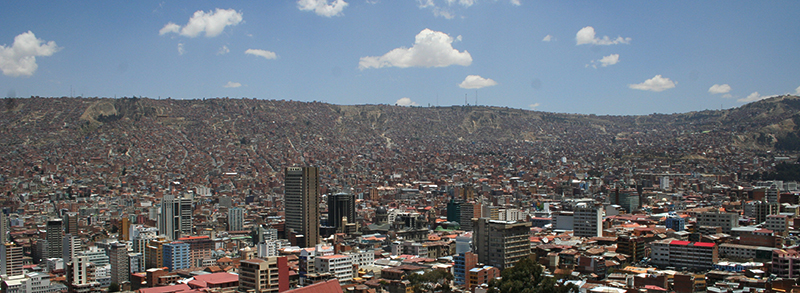 The Spanish chose this odd place for a city on 20th October 1548 to avoid the chill winds of the plateau and because they had found gold in the Rio Choqueyapu which runs through the canyon. As a result, the rich live in the bottom of the canyon where it is warmer and the lower altitude has more oxygen and the poor people live up the steep sides towards to the rim. This is quite the opposite of other cities where the rich live on the higher ground away from the city melee.
The Spanish chose this odd place for a city on 20th October 1548 to avoid the chill winds of the plateau and because they had found gold in the Rio Choqueyapu which runs through the canyon. As a result, the rich live in the bottom of the canyon where it is warmer and the lower altitude has more oxygen and the poor people live up the steep sides towards to the rim. This is quite the opposite of other cities where the rich live on the higher ground away from the city melee.
This fact is just one of many oddities about this place. The city is similar to other South American cities that we have visited, lots of people buzzing around, buses belching out fumes, commercial centres, markets, a Plaza de Armas, Plaza de San Francisco and its church (St Francisco is getting to know us very well!), Parque Central and many museos. There are few colonial buildings left, only the Plaza Murillo has formal gardens, a huge graceful cathedral and the presidential palace in Italian renaissance style. What makes this place so very different from others is the huge ‘black market’ from which the whole city runs. The streets are swarming with sellers of absolutely everything you can imagine from mangoes to memory sticks, from apples to alpacas and alfalfa (aids the men’s virililty apparently – Bolivian Viagra!), ‘Chollas’ clothes to cereals and grain by the sack. Near the centre entire pavements are taken over by street sellers and you have no choice but to walk in the road.
What was most fascinating was the amazing ‘Mercado de Hechiceria’ – the Witches Market that sells charms, herbs and more gruesome items such as llama foetuses. The small area is known as the witches market for all the potions and lotions the elderly ladies sell – the Spaniards regarded them as witches. However the significance of the area is laid deep within the Bolivian culture. The stalls sell miniature idols, usually made from plaster of Paris, and believers say that these idols bring them luck if they are received as gifts. So alongside these idols, miniatures of just about anything can be bought – houses, cars, trucks, suitcases, university diplomas, babies, animals, buses. The idea is that your ‘wishes’ is made up into a basket with the lucky idol, sweets, herbs and colourful llama wool, and is then blessed by a Yatiri, an Aymara priest. Following this ritual the item will be yours in a year! The llama foetus brings added luck for wishes related to agriculture, good harvets, rains etc. if added to the mix. If you have a house built a llama foetus with all its fur is buried in the foundations, the llama is the offering to ‘pachamama’ – mother earth.
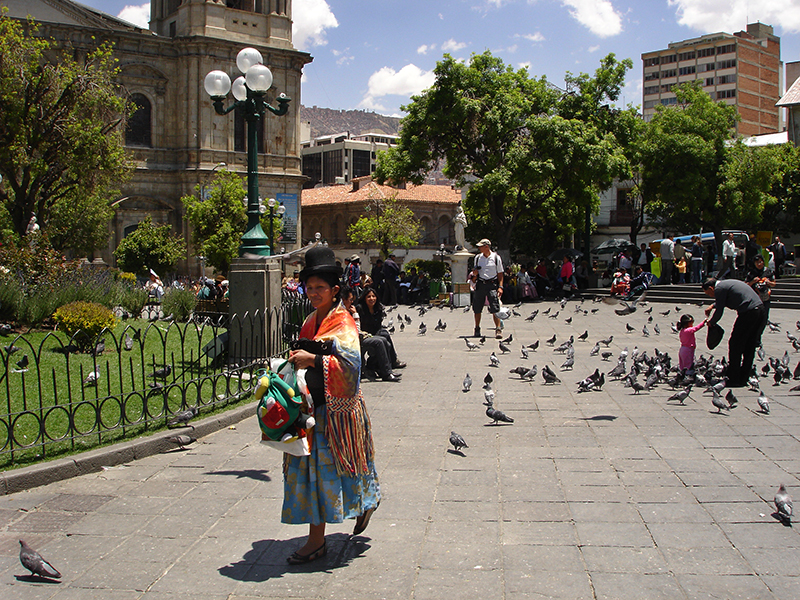 Another notable difference in La Paz is the very large numbers of women in national dress. These women are known as ‘Chollas’ and are essentially working class, though some married into the wealthy Spanish families in the early 20th century and benefited from a better life. Only women sell and trade on the streets, because traditionally the men were working in the fields. Cholla dress is very complex and heavy, partly to cope with the cold temperatures that plummet in the shade and evenings. The skirt is fully pleated with many petticoats underneath – married women wear 4 petticoats whilst the single girls wear only 1 or 2. You can differentiate those who are married by the hat which is a hard, ‘bowler’ style that originally came from England and Italy. The designs didn’t find favour with the men and so were adopted by the women, for reasons we cannot understand, since they are clearly not a fashion statement. The large colourful blankets they wear on their backs are the traditional ‘backpacks’ which they use to carry everything from babies to food.
Another notable difference in La Paz is the very large numbers of women in national dress. These women are known as ‘Chollas’ and are essentially working class, though some married into the wealthy Spanish families in the early 20th century and benefited from a better life. Only women sell and trade on the streets, because traditionally the men were working in the fields. Cholla dress is very complex and heavy, partly to cope with the cold temperatures that plummet in the shade and evenings. The skirt is fully pleated with many petticoats underneath – married women wear 4 petticoats whilst the single girls wear only 1 or 2. You can differentiate those who are married by the hat which is a hard, ‘bowler’ style that originally came from England and Italy. The designs didn’t find favour with the men and so were adopted by the women, for reasons we cannot understand, since they are clearly not a fashion statement. The large colourful blankets they wear on their backs are the traditional ‘backpacks’ which they use to carry everything from babies to food.
Whilst the female position in the Bolivian culture has become more equal one aspect of life continues to blight them. The men often have 2 families; it is not legal but continues to be condoned. Most disturbingly, a man will marry and have a family and then just ‘disappear’ leaving his first wife and children to start another family. Apparently it is less common in the rural regions but, for the first wife, the stigma of being a single mother is unwelcomed despite the habit of men walking away.
Another oddity about La Paz is that while it is regarded internationally as the capital of Bolivia, to the locals Sucre in the Southwest is regarded as the capital. Why this should be is unclear as La Paz is not only the largest conurbation but also the political, financial and commercial centre.
What is indisputable is that the government is not in control of the country. The borders are uncontrolled and contraband from Chile, Peru, Argentina and Uruguay flows freely into the country. Bolivia’s textile industry has collapsed and most of the population are without jobs. An artificially high exchange rate doesn’t help. With so many people outside employment and with no benefit system, the country trades entirely on the black market. However, at least the country is incredibly wealthy in terms of minerals and gases which must bring them benefits in the future.
A side note here: The Iranians are generously giving their expertise in the extraction of natural gas and the Bolivians are exporting Uranium in return. Under the beautiful salt flats of Uyuni the largest deposit of Lithium has been discovered – the Chinese are coming!
Tourism, which is an obvious source of income for the country is not encouraged but tolerated.
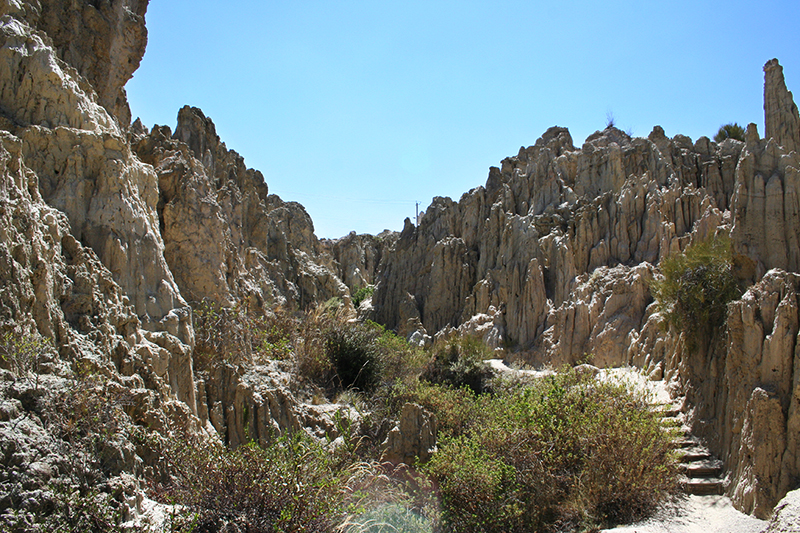 Just South of La Paz is the ‘Valle de la Luna’ or Moon Valley which is an area that looks a bit like Arizona with rocky terraces and outcrops and large number of cacti. The area only came under national protection in 2003 as building and construction on the outskirts of La Paz had encroached the little remaining area that shows the historical geography of the canyon. Oh and there is a golf course there – the highest one in the world! There is a fantastic view of Mt Illimani, whose glacier provides the water for the city. Unfortunately it is forecast that the glacier will disappear in the next couple of years due to global warming – god only knows what they will do for water then, but nobody appears to be preparing for this.
Just South of La Paz is the ‘Valle de la Luna’ or Moon Valley which is an area that looks a bit like Arizona with rocky terraces and outcrops and large number of cacti. The area only came under national protection in 2003 as building and construction on the outskirts of La Paz had encroached the little remaining area that shows the historical geography of the canyon. Oh and there is a golf course there – the highest one in the world! There is a fantastic view of Mt Illimani, whose glacier provides the water for the city. Unfortunately it is forecast that the glacier will disappear in the next couple of years due to global warming – god only knows what they will do for water then, but nobody appears to be preparing for this.

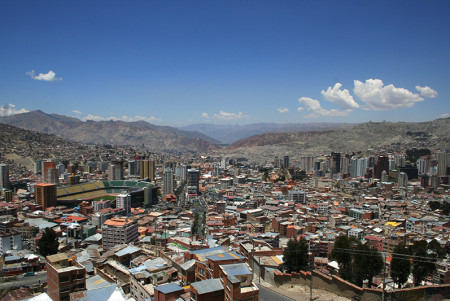
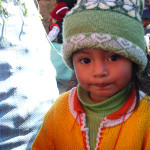
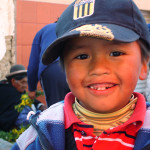
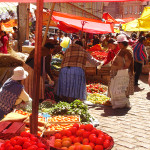
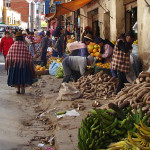
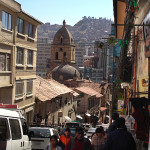
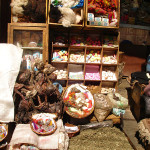
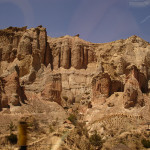
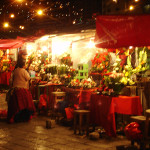
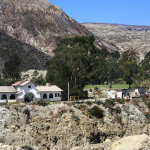
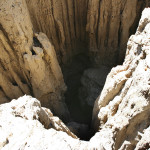
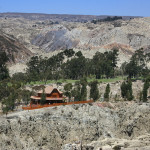
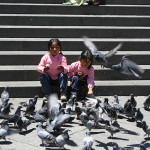
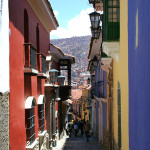
No comments yet.